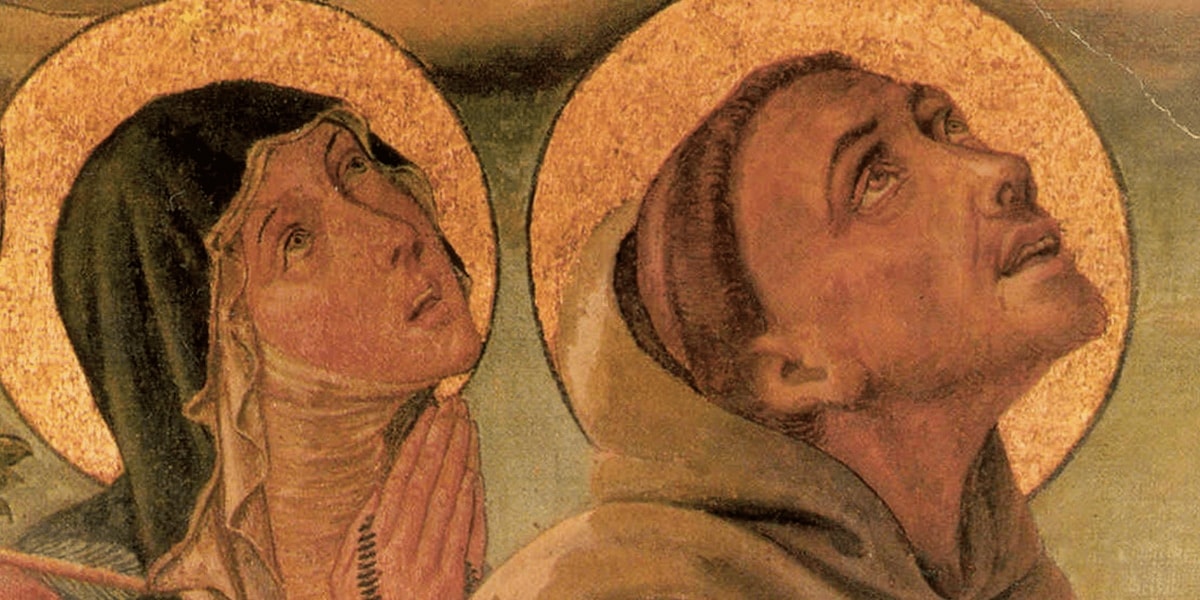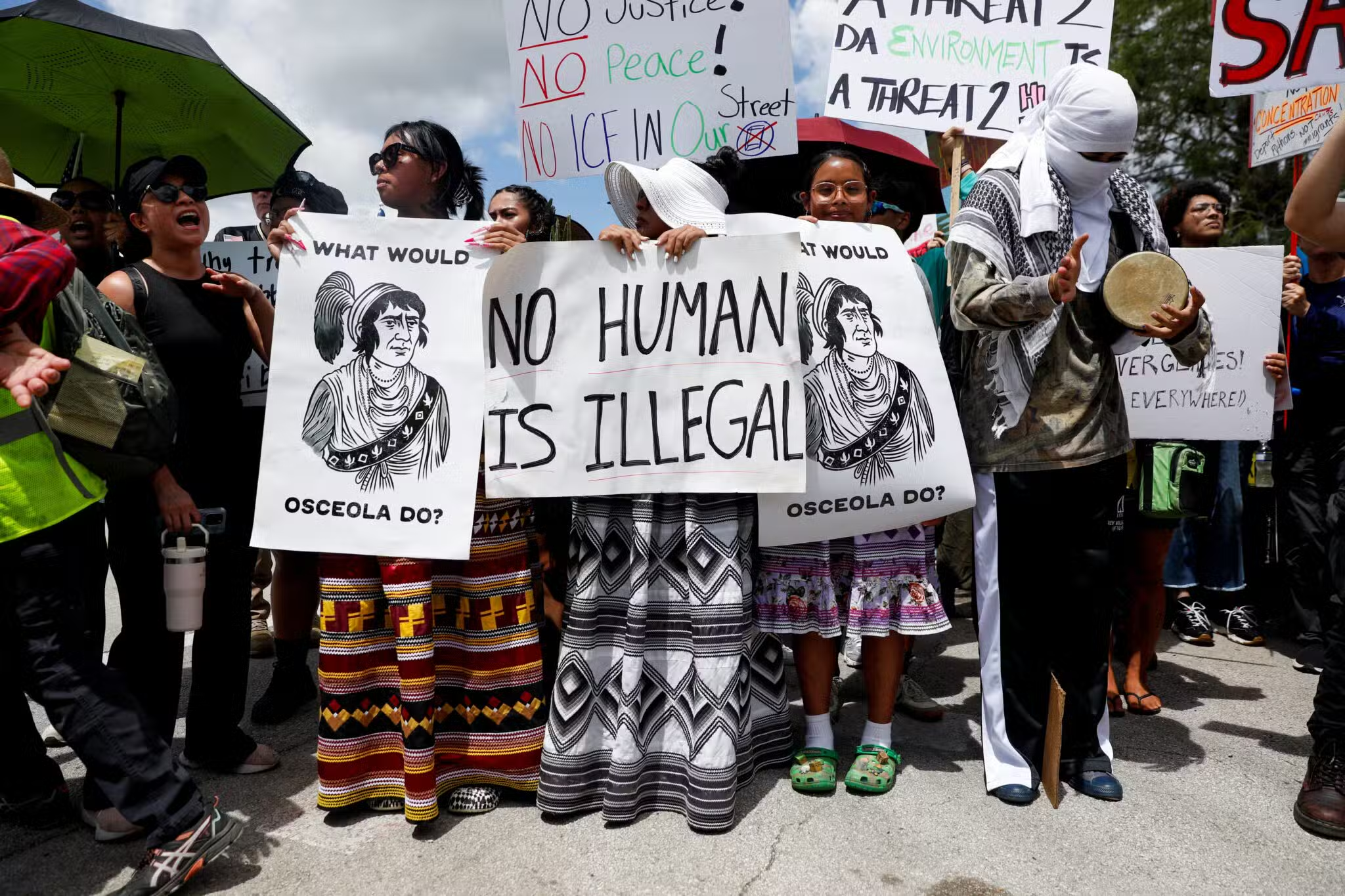Sometimes we are so attracted to the saints for our own personal reasons that we fail to see how radical they were in their day.
In 1212, if the small Umbrian city of Assisi’s post office had displayed “Wanted” posters, Chiara di Favarone di Offreduccio and Francesco Bernardone might well have been on them. Their crime? Seriously disrupting the social, economic, and religious stability of their native city.
Intervening centuries of veneration for Assisi’s two most famous citizens have obscured for many people how much Clare and Francis challenged the most important foundations and assumptions of their society.
A Religious Challenge
Although in August of 1212, Clare and Francis were personally on good terms with Assisi’s Bishop Guido II, they were objects of great suspicion for many other people. A mere four months earlier, with encouragement from Francis and Bishop Guido, Clare had left her family home under the cover of darkness, leaving the safety of that walled city. She and a maidservant went down the hill to the chapel of Our Lady of the Angels. Francis cut her hair and gave her the clothing of a lay penitent and a simple habit, setting in motion a radically new form of religious life for women. For a very short time, Clare lived as a servant in the Benedictine monastery of San Paolo and later with a group of laywomen at San Angelo in Panzo near Assisi. There were plenty of women’s monasteries nearby, but Clare felt that God was calling her to a different type of religious life.
Clare could have entered a respectable monastery, bringing with her a sizable dowry in land or cash, enabling her to live with other noblewomen in the style to which they had become accustomed. According to conventional thinking, young women without a dowry were clearly not being called by God to religious life. Women from all ranks of society, however, soon joined Clare at San Damiano, a rundown roadside chapel that Francis and others had repaired and that Bishop Guido made available.
In 1206, Francis had shocked the men and women of Assisi by renouncing his inheritance and starting to live out the Gospel via a poor, itinerant lifestyle. By the spring of 1209, he had attracted 11 brothers and received from Pope Innocent III verbal approval for a form of religious life very different from the monasticism that had become standard in Western Christianity.
Monks and nuns for centuries had based their lives on Acts 4:32: “The community of believers was of one heart and mind, and no one claimed that any of his possessions was his own, but they had everything in common.”
While honoring that verse, Francis was much more inspired by Jesus’ missionary discourse (Mt 10:1—11:1) with the poverty and itinerancy that it implied. Members of the Order of Preachers (Dominicans) were inspired by the same Scriptures but saw their ministry as serving the Church through sound preaching on doctrine, reinforced by a life of poverty.
Francis and his brothers cared for lepers, their era’s most despised group of Christians, because many people considered this disease just punishment for the sins of those afflicted by it. The admonition “Abandon hope, all ye who enter here” (the sign over the gates of hell in Dante’s Inferno) originally appeared over the main gate of a leprosarium, of which Assisi had two, plus a leper hospital. Before 1215, when Lateran Council IV required that all women religious be cloistered, Clare and her sisters sometimes helped Francis and the friars “show mercy” (Francis’ expression) to women and men suffering from leprosy.
The emphasis that Clare and Francis placed on evangelical poverty aroused still more suspicions in Assisi and nearby areas. Were they and their followers like many other groups that promoted Gospel poverty but ended up being denounced by a Church that had initially encouraged them?
Economic Disruption
“Upward mobility” was pretty much unheard-of in 13th-century Western Europe. People generally expected to remain within the social group into which they had been born. But the times were changing radically as Francis and Clare grew into adulthood.
A feudal society based on land ownership was giving way to a merchant economy based on cold, hard cash and the ability to identify and fulfill new needs of the general population. Pietro Bernardone, Francis’ father and a cloth merchant, may eventually have become the richest man in Assisi by buying land and renting it out. Many merchants, in fact, were richer than nobles with impressive titles but few material resources. In 1198, Assisi’s minores (those not of noble background) led an uprising that resulted in the destruction of the Rocca Maggiore fortress, a symbol of imperial power.
So how did Francis and Clare challenge the economic system? By avoiding land ownership, they opted out of the interlocking relationships that drove the economy. If dowries were not accepted from the women who joined Clare at San Damiano, that meant that women from much more modest economic backgrounds could become nuns there in a new style of monastery.
The nobles—women and men—who joined Clare and Francis experienced a decline in their standard of living after doing so. They sought to live by the work of their hands in a society that generally considered manual labor a curse to be avoided whenever possible.
Begging was considered socially disruptive and contrary to the Bible. Francis and Clare wanted their followers to live from the work of their hands and beg only if absolutely necessary. Caring for lepers generated no income.
By 1228, Clare had secured from Pope Gregory IX the “Privilege of Poverty” (permission not to accept lands to generate income)—but this applied only to San Damiano. Any other Poor Clare monastery would have to secure a similar guarantee on its own.
Popes, cardinals, and bishops were haunted by the fear that becoming Poor Clares might eventually turn noblewomen into paupers. Only two days before she died in 1253 did Clare receive Pope Innocent IV’s approval for her “Form of Life,” the first Rule written by a woman for women religious.
In that regard, Clare posed a much greater threat to Assisi’s economic system than Francis did.
Social Implications
In this topsy-turvy world, the families of Francis and Clare were not originally friends. The Bernardone family (part of the minores) participated in the revolt that forced Clare’s household and other noble Assisi families (the majores) into exile in nearby Perugia for four years. When Clare was a child and a teenager, the people in her household probably spoke very negatively about Francis, his family, and the minores in general.
Traditional monasteries of nuns were needed in a patriarchal society where many men died young in battle or joined monasteries, taking a vow of celibacy. Single women either were looking to become married or had already become widows. Life in women’s monasteries had many of the creature comforts the nuns had enjoyed at home. According to many people, religious conversion was good but was much like recently introduced spices from the East—always used with great moderation!
What Francis and Clare began challenged all that. The baker’s daughter might one day become a Poor Clare abbess, directing the work of a noblewoman nun in charge of that monastery’s laundry. Soon after Clare began a new form of Gospel living, her sister Caterina (known to us as Agnes) joined her. Their other sister (Beatrice) and their mother (Ortolana) eventually joined them. Rich monasteries of women began to ask for a nun from San Damiano to help them follow the example of that monastery.
That Francis could initially have been a spiritual guide for Clare was certainly shocking—almost as much as some friars later seeking spiritual guidance from Clare! In a world where most people held office for life, the possibility of voting out an abbess or general (worldwide) minister was utterly shocking. And yet that would eventually become possible for a Poor Clare abbess and a Friar Minor general minister. People of all social backgrounds became radically equal in Poor Clare monasteries and among the Friars Minor.
Today we generally have a positive attitude about new things, but in the Middle Ages “new” was often linked to whatever was religiously suspect, politically dangerous, and/or socially disruptive.
The “new and improved” tagline would appeal to some people, but for most it would have made as much sense as “square circles.” Clever words, but together what could they mean?
In 1228, Thomas of Celano, the first biographer of St. Francis, wrote: “Men ran, and women, too, ran; clerics hurried, and religious hastened that they might see and hear the holy man of God who seemed to all to be a man of another world. Every age and every sex hurried to see the wonderful things that the Lord was newly working in the world through his servant” (First Life of Francis, chapter 15).
Thomas meant this as high praise of Francis, but many people in his very status-conscious society thought this mixing of social classes was hopelessly idealistic and extremely dangerous.
This egalitarian view was especially true of the Secular Franciscan Order (formerly known as the Third Order of St. Francis), where nobles, bootmakers, seamstresses, and members of every class and occupation sought to live the Gospel in their own way, but after the example of Francis and Clare.
Clare and Francis did not promote change merely for the sake of change. They simply responded to their society’s hunger for deeper conversion to Jesus’ way as recorded in the Gospels. That hunger still continues among us.









1 thought on “Clare and Francis: Assisi’s Most Dangerous Citizens”
Very interesting. Where would I find more information on this? Is there a good book to start with?